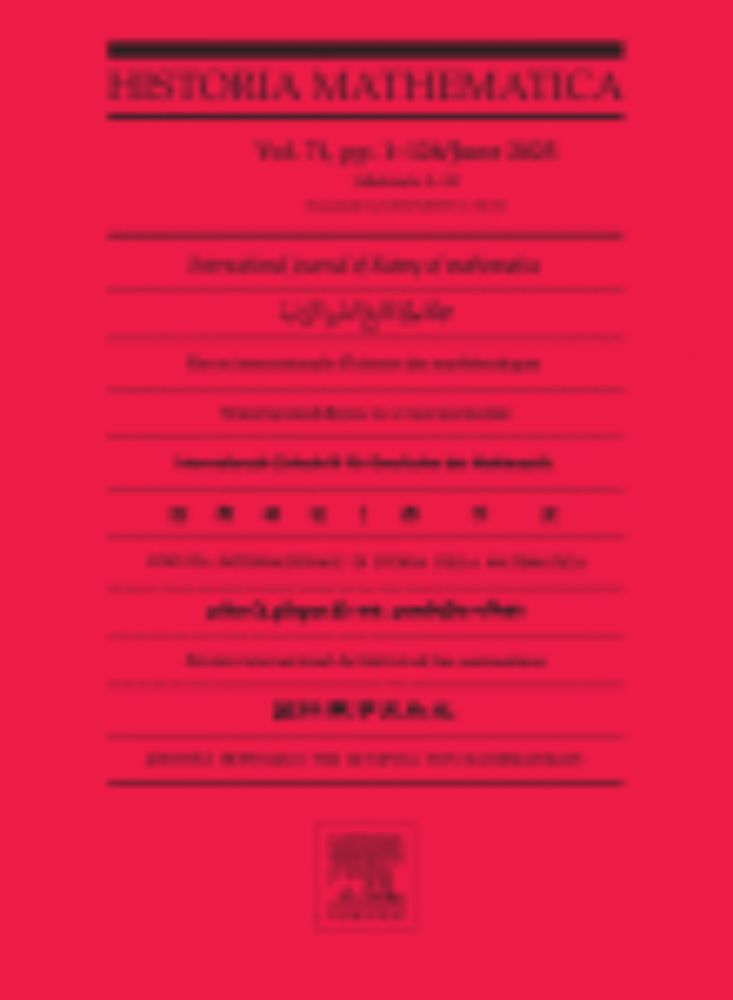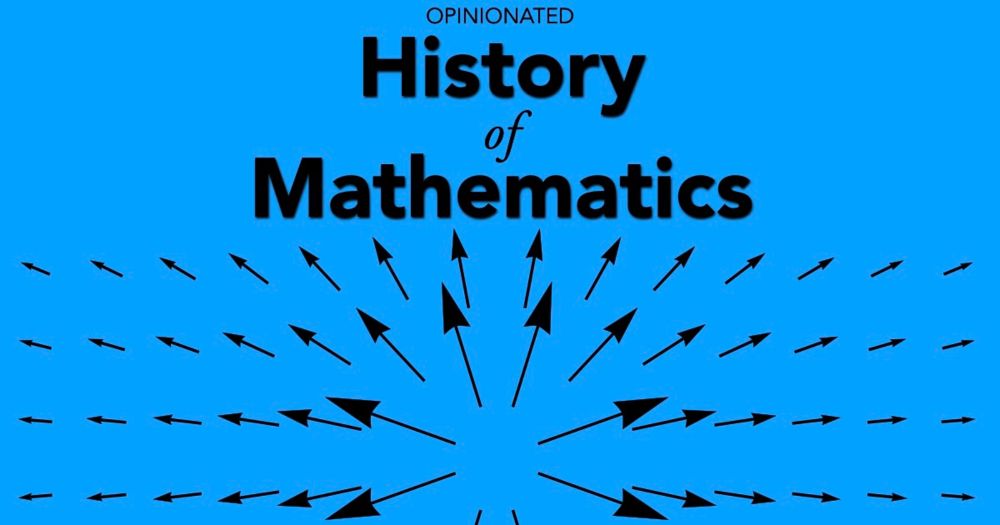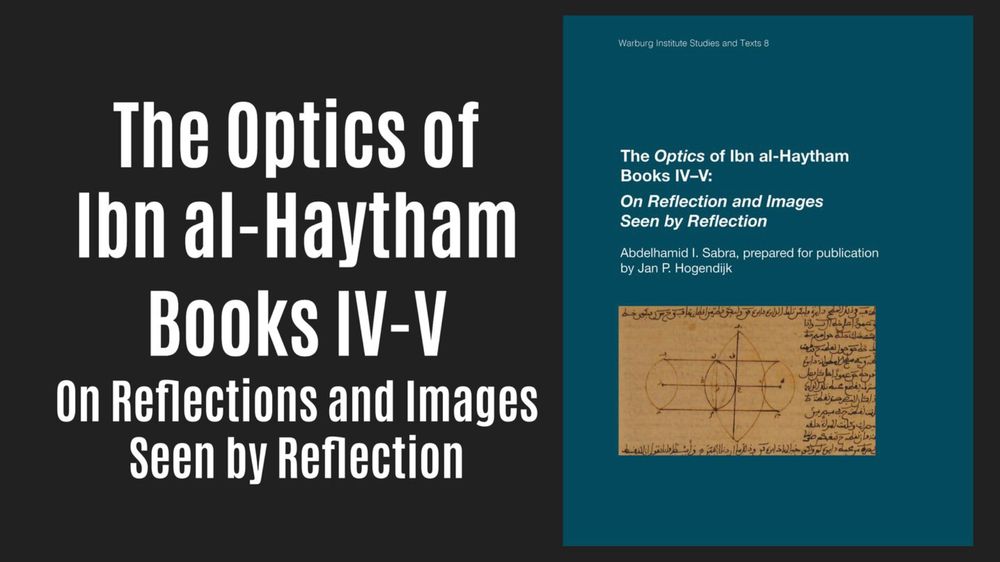YouTube video by 3Blue1Brown
Why ruler and compass? | Guest video by @bensyversen
Much of Euclid’s Elements is easily misunderstood. Some proofs seem to have logical gaps. Some constructions seem pointless, others seem needlessly convoluted.
Each of these provides a window into how the ancient Greeks thought about math and the philosophical role that geometry played.
18.09.2025 14:24 — 👍 91 🔁 11 💬 4 📌 1
the Notices of the DEI
14.08.2025 16:27 — 👍 0 🔁 0 💬 0 📌 0
I believe the Greek says straight lines (εὐθεῖας γραμμὰς) just as in the Elements. "Rays" seems to be an erroneous and misleading translation.
31.07.2025 14:29 — 👍 0 🔁 0 💬 1 📌 0
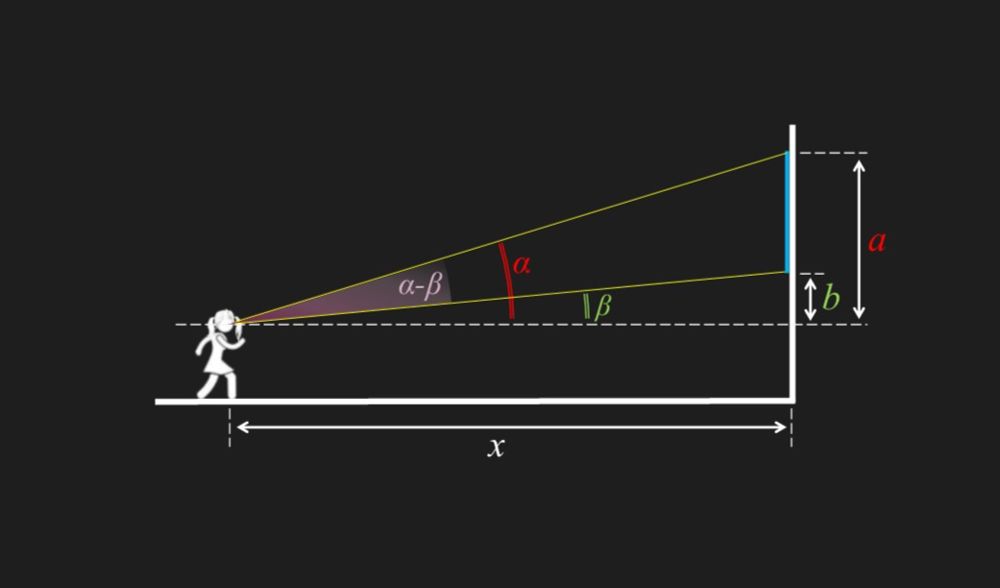
Optimal Picture Viewing Distance
Euclid says correctly: If one draws such lines, this is how they behave. For example when doing problems like this: datagenetics.com/blog/decembe... Everything about this perfectly fits Euclid's text.
31.07.2025 14:08 — 👍 1 🔁 0 💬 1 📌 0
A true statement about how lines emanating from a point behave. It does not say that that is how human vision actually operates physically. We use the same principle today when doing geometrical optics: connect the eye to points of interest by lines, then investigate the angles between them etc.
31.07.2025 13:58 — 👍 0 🔁 0 💬 2 📌 0
Nothing in Euclid says that he was committed to an extramission theory of sight. He describes visual phenomena relative to an observer, but this could just as well be understood the same way as when a heliocentric astronomer uses a geocentric framing or terminology for practical purposes.
31.07.2025 13:15 — 👍 1 🔁 0 💬 2 📌 0
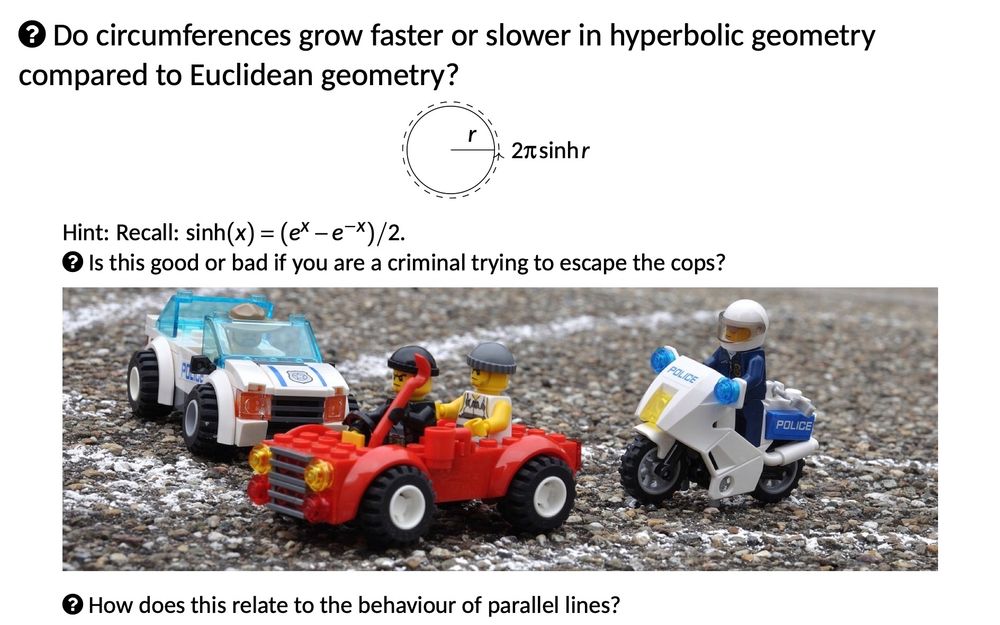
In my geometry course I made a slide on this inspired by your book. intellectualmathematics.com/geometry/
27.07.2025 18:08 — 👍 1 🔁 0 💬 0 📌 0
Not sure, maybe eventually but I have other things planned there to appear soon.
03.07.2025 19:21 — 👍 2 🔁 0 💬 0 📌 0
There is hardly anything substantial as far as I know, except old things in Italian. On a later part of the abacus school tradition I enjoyed the chapter zbmath.org/7940758 and hope to read the book link.springer.com/book/10.1007....
11.06.2025 22:42 — 👍 1 🔁 0 💬 1 📌 0
Book review: Form & Number: A History
of Mathematical Beauty, by Alan J. Cain
Viktor Blåsjö's review of the book "Form & Number: A History of Mathematical Beauty" by Alan J. Cain, is now live at tug.org/books/review...
10.05.2025 19:03 — 👍 2 🔁 1 💬 0 📌 0
My obituary of Henk Bos, who opened the eyes of so many of us to the history of mathematics: research-portal.uu.nl/ws/portalfil...
21.03.2025 15:58 — 👍 6 🔁 2 💬 0 📌 0
But how are you supposed to “draw the tangent line”? Archimedes doesn’t say. Does he think that drawing tangents is somehow “more given” or more basic than rectifying a circle (i.e., knowing π)? Unclear why one would think that.
05.03.2025 23:09 — 👍 1 🔁 0 💬 0 📌 0
I believe Aristarchus did not make a "lousy measurement" (15:58). Rather, he deliberately underestimated the size of the sun, and showed that even in this worst-case scenario it is way bigger than the earth (i.e. heliocentrism wins). See arxiv.org/abs/2102.06595 §7.6.
08.02.2025 21:10 — 👍 10 🔁 0 💬 0 📌 0
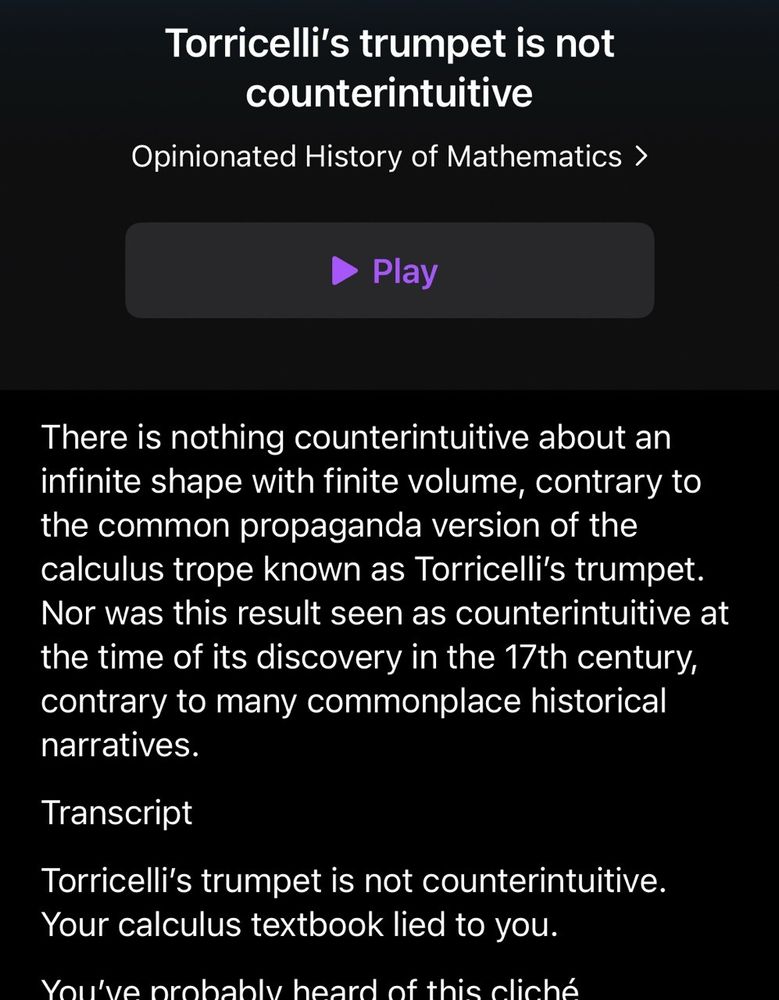
Torricelli's trumpet is not counterintuitive Opinionated History of Mathematics > • Play There is nothing counterintuitive about an infinite shape with finite volume, contrary to the common propaganda version of the calculus trope known as Torricelli's trumpet. Nor was this result seen as counterintuitive at the time of its discovery in the 17th century, contrary to many commonplace historical narratives. Transcript Torricelli's trumpet is not counterintuitive. Your calculus textbook lied to you. You've probably heard of this cliché…
I like this rant: I never found Gabriel's horn / Torricelli's trumpet to contradict my intuition, though it's a fun example. https://intellectualmathematics.com/blog/torricellis-trumpet-is-not-counterintuitive/
01.01.2025 12:22 — 👍 3 🔁 1 💬 1 📌 0
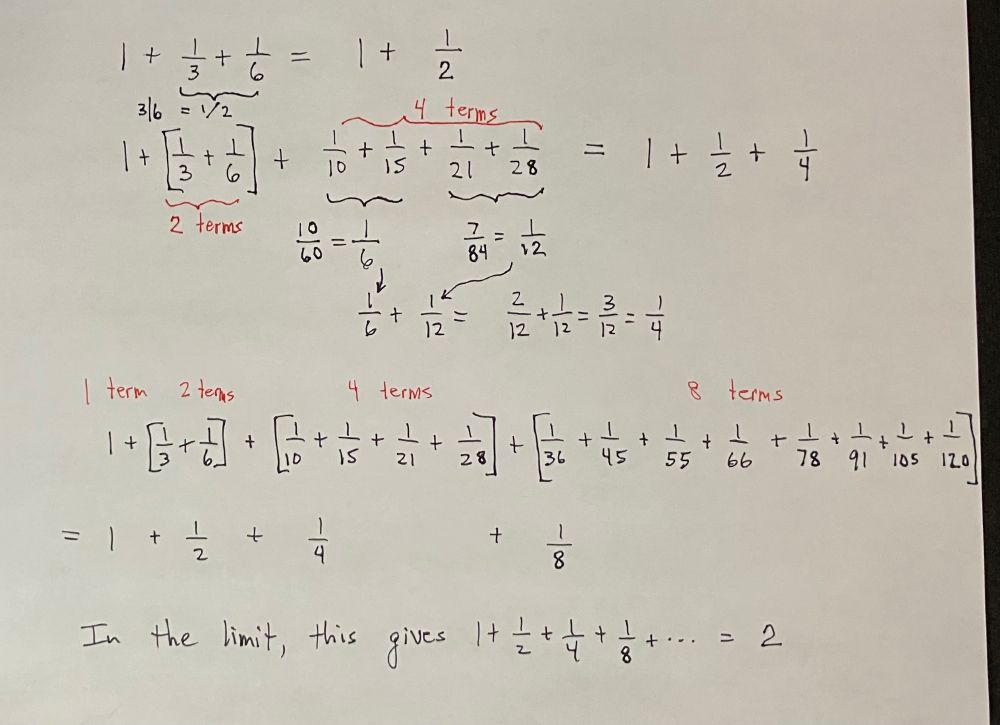
Today I learned (ht Viktor Blasjo) how Huygens summed the reciprocals of the triangular numbers. He regrouped the series and showed that it equals the geometric series 1+1/2+1/4+... = 2, like so!
09.12.2024 21:22 — 👍 61 🔁 7 💬 2 📌 0
Sometimes 1 30 was written "1 and ½" to emphasise that 1½ was meant, not 90. Another method of disambiguation was by the size of the characters: a 1 written bigger represents 60, etc. See Neugebauer, Exact sciences in antiquity, pp. 19-20.
02.12.2024 12:42 — 👍 3 🔁 0 💬 1 📌 0
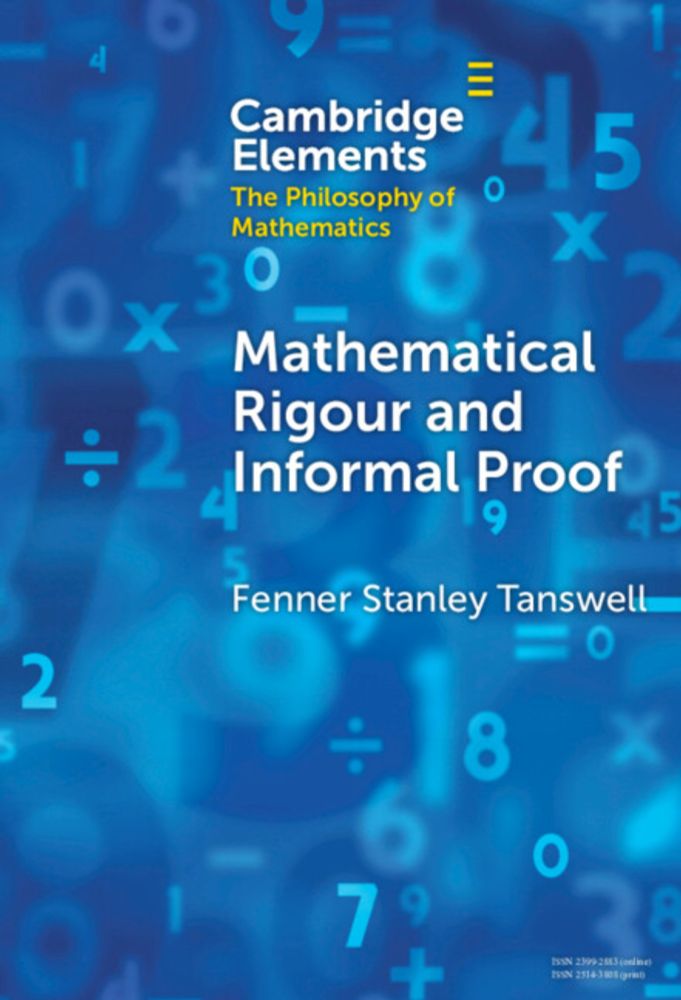
Mathematical Rigour and Informal Proof
Cambridge Core - Philosophy of Science - Mathematical Rigour and Informal Proof
My book in the Cambridge Elements series on "Mathematical Rigour and Informal Proof" is out today! It's free to download for two weeks, so please share it widely with anyone who may be interested. 🥳🎉
www.cambridge.org/core/element...
01.03.2024 12:22 — 👍 13 🔁 4 💬 0 📌 1
🥁: Historian of mathematics, famous contrarian and "Intellectual Mathematics" podcaster @viktorblasjo.bsky.social is now on Bluesky! #histsci
02.01.2024 10:49 — 👍 10 🔁 4 💬 0 📌 0
The Centre for Logic and Philosophy of Science (CLPS) at the Institute of Philosophy (@kuleuvenuniversity.bsky.social) focuses on #logic and #philsci, with a concentration on the philosophies of the special sciences • https://hiw.kuleuven.be/clps #philsky
Historian of Science interested in the history of astronomy and its material culture @ University of Pittsburgh/ Max Planck Institute for the History of Science
The official account for the Euler Archive. Check out our companion journal, Euleriana: http://scholarlycommons.pacific.edu/euleriana/
EPSA promotes the discipline and profession of philosophy of science in Europe.
Our journal: https://link.springer.com/journal/13194
The American Mathematical Society is dedicated to advancing research and connecting the diverse global mathematical community.
A review journal publishing high quality, comprehensive reviews of books in the fields of history and philosophy of science, and science and technology studies.
https://link.springer.com/journal/11016
Mathematician, faculty developer, and education researcher currently working as a consultant. He/him
https://drew-lewis.com
Interesting finds on the shores of the history of science and the humanities. We are a group of historians of science from the Netherlands editing a blog on the history of the sciences and the humanities. Posts by Elian Schure.
PhD Candidate at the Munich Center for Mathematical Philosophy | I do research in Logic and Phil of Math | Here to connect and keep updated (he/his)✌️
http://youtube.com/@bensyversen
Mathematics professor at Collège de France and fellow of Trinity College Cambridge.
https://sites.google.com/view/desmosgeometryinaction/home
Flatiron Research Fellow | Theoretical Neuroscience and Computational Vision
https://www.cns.nyu.edu/~fiquet/
Theory & History of Psychology at the University of Groningen (@rug-gmw.bsky.social). Elected fellow of the APA in History 26 and Developmental 7. Elected president of the APA division for History, 2024-2026. Advisor to NWO SSH Roundtable for Humanities.
M.Sc.Eng., project management trainer & change facilitator; graphic recorder & visual facilitator. Using lots of drawings and sketches for fun & understanding.
Mathematics professor at the University of Denver. Quasigroups, Semigroups, Automated Deduction. He/Him. Occasionally drop in at Mathstodon, but not as much as I used to.
Conservateur de manuscrits et numérique à la BnF. Science des astres médiévale, entre autres choses.
Boydston Chair of American Philosophy, Director, Center for Dewey Studies at SIU Carbondale. @deweycenter.siu.edu
Editor: @hoposjournal.bsky.social
Dewey, Pragmatism, HPS, HOPOS, values in science, TTRPGs, comics.
Website: https://thehangedman.com/
Executive Publisher at T&F. Publish journals. Walk dogs. ❤️ doughnuts & ice cream. #scicomm #physicalsciences #mathematics #statistics #datascience #history #science #STS
Researcher, linguist. Ambition to contribute to positive change in collaboration with society.



